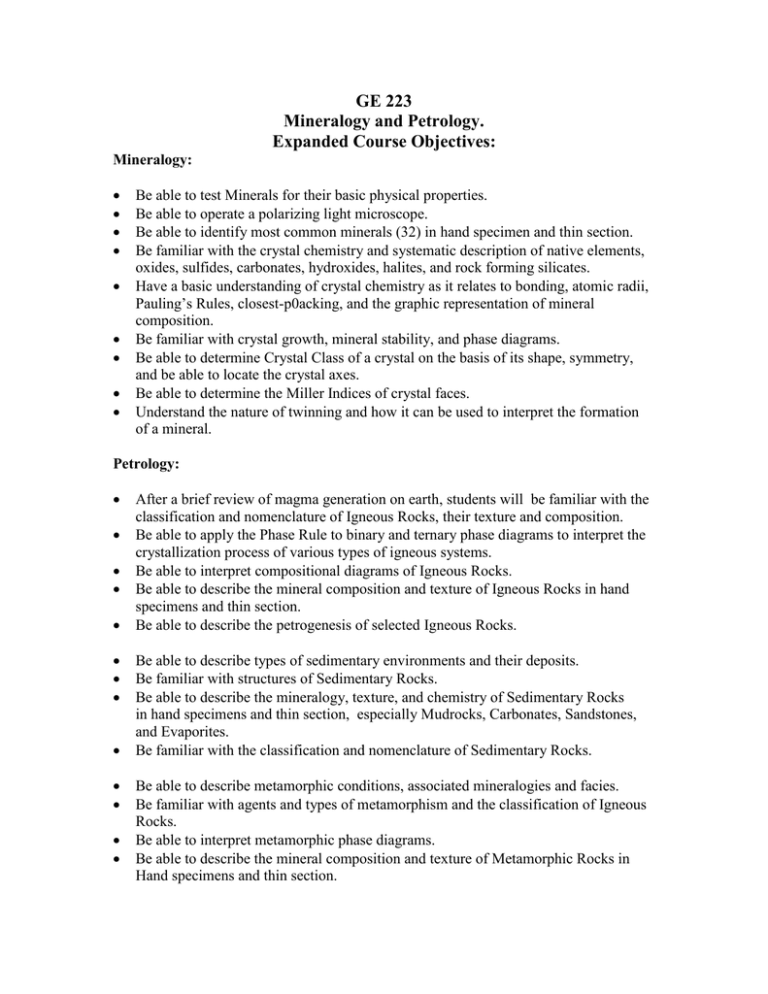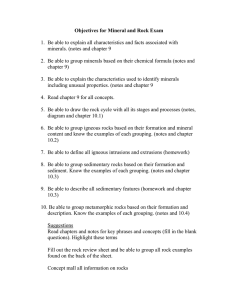GE 223 Mineralogy and Petrology. Expanded Course Objectives:
advertisement

GE 223 Mineralogy and Petrology. Expanded Course Objectives: Mineralogy: Be able to test Minerals for their basic physical properties. Be able to operate a polarizing light microscope. Be able to identify most common minerals (32) in hand specimen and thin section. Be familiar with the crystal chemistry and systematic description of native elements, oxides, sulfides, carbonates, hydroxides, halites, and rock forming silicates. Have a basic understanding of crystal chemistry as it relates to bonding, atomic radii, Pauling’s Rules, closest-p0acking, and the graphic representation of mineral composition. Be familiar with crystal growth, mineral stability, and phase diagrams. Be able to determine Crystal Class of a crystal on the basis of its shape, symmetry, and be able to locate the crystal axes. Be able to determine the Miller Indices of crystal faces. Understand the nature of twinning and how it can be used to interpret the formation of a mineral. Petrology: After a brief review of magma generation on earth, students will be familiar with the classification and nomenclature of Igneous Rocks, their texture and composition. Be able to apply the Phase Rule to binary and ternary phase diagrams to interpret the crystallization process of various types of igneous systems. Be able to interpret compositional diagrams of Igneous Rocks. Be able to describe the mineral composition and texture of Igneous Rocks in hand specimens and thin section. Be able to describe the petrogenesis of selected Igneous Rocks. Be able to describe types of sedimentary environments and their deposits. Be familiar with structures of Sedimentary Rocks. Be able to describe the mineralogy, texture, and chemistry of Sedimentary Rocks in hand specimens and thin section, especially Mudrocks, Carbonates, Sandstones, and Evaporites. Be familiar with the classification and nomenclature of Sedimentary Rocks. Be able to describe metamorphic conditions, associated mineralogies and facies. Be familiar with agents and types of metamorphism and the classification of Igneous Rocks. Be able to interpret metamorphic phase diagrams. Be able to describe the mineral composition and texture of Metamorphic Rocks in Hand specimens and thin section.




